And I thought I leaned toward the nerdy side of plants!..If you have not seen this clip, it is a classic. If you are interested in plants, you will be mesmerized by the book, “The Secret Life of Plants” …It changed my perspective of all things green forever…it is an absolute must-read to pamper the inner nerd in you.


I have even purchased my own polygraph machine from the flea market just north of San Antonio. I am currently in the process of recreating some of the experiments documented in the book. What?
The plant “alphabet training” toward the end of the clip?…I showed it to my daughter who will be starting kindergarten in the fall with a horticultural threatening… “Hey, come over here and look at this… a talking plant that will be most likely be in the same class as you..oh, and look…it knows the entire alphabet already.”
I just received an incredulous stare followed my an exaggerated eye-roll, then a premature teenage “what-EVER!”
Now here is a plant that will not likely be attacked by a lab technician wielding a large bread knife…Milk thistle.
Silybum marianum
Another name for it is St. Mary’s thistle. I have allowed this plant to mature in the Patch to see if it would develop and bloom, and it has, in fact it has developed two! The medicinal benefits of milk thistle have been valued for more than 2,000 years. Written records show that as early as the first century, Romans were using the plant as a liver-protecting agent.
 “Prepare thyself to be slain, thistle of milk”.
“Prepare thyself to be slain, thistle of milk”.
The plant was also frequently used throughout the Middle Ages, and it is in the herbal literature of this period that the medicinal properties of milk thistle seeds are first noted. Several scientific studies suggest that substances in milk thistle (especially a flavonoid called silymarin) protect the liver from toxins. The active ingredient of the herb, silymarin, is found in the ripe seeds of the plant. Milk thistle is native to the Mediterranean region, and is now found throughout the world.
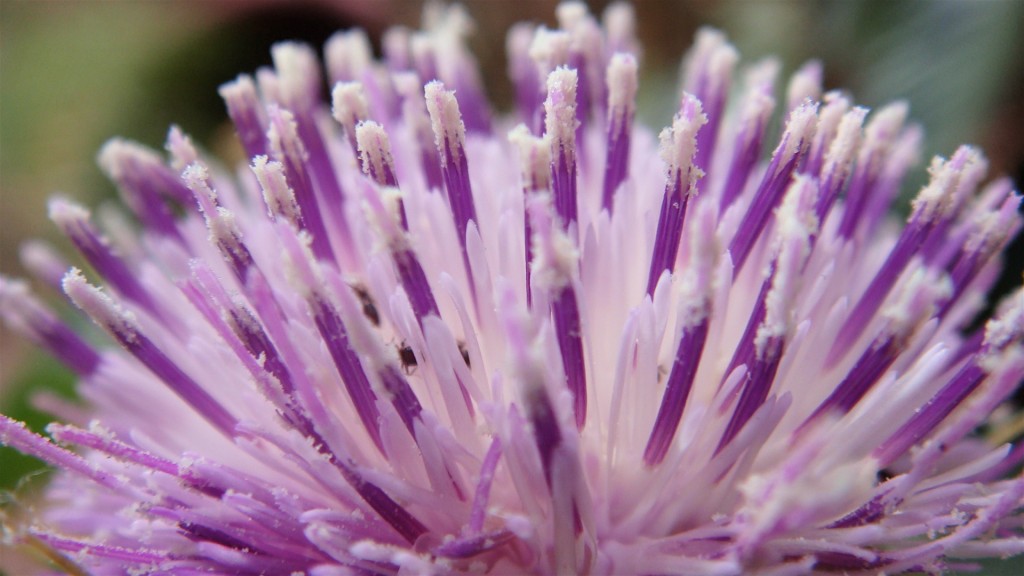
This stout thistle usually grows in dry, sunny areas. The spiny stems branch at the top, and reach a height of 4 to 10 feet. The leaves are wide, with white blotches or veins. Milk thistle gets its name from the milky white fluid that comes from the leaves when they are crushed. The flowers are red-purple which true to its name, resembles a thistle.
“Aye, it does look a wee bit like a Scottish thistle, I’ll give ye that ESP”!
As I walked to my “everything but the kitchen sink” rainwater collection tank of buckets, cups and saucers, vases etc, etc. I was greeted by an extensive web and this brightly colored little spider sitting proudly in the middle of it…
This is an Orchard Spider,
Leucauge venusta
This spider is super fast, and it will deliberately shake its web to try to scare you away. Oh and they will give you a bite if you really annoy them, a fact that I was only too well aware off as my camera lens was almost touching it. Orchard spiders are very similar to regular orb-weavers, they build their webs in strategic locations to catch flies, moths, and other insects. This spider web spanned the entire radius of my stock tank, catching mosquitoes no doubt.
Remember these?…
The blooms on my Threadleaf ragwort have long since faded, being replaced by seed heads that are attractive in their own way, a large seed head for such small blooms!
After I had taken these shots I gave one of the plants a swift slap, sending thousands of the tiny seeds into the air. Who could resist?
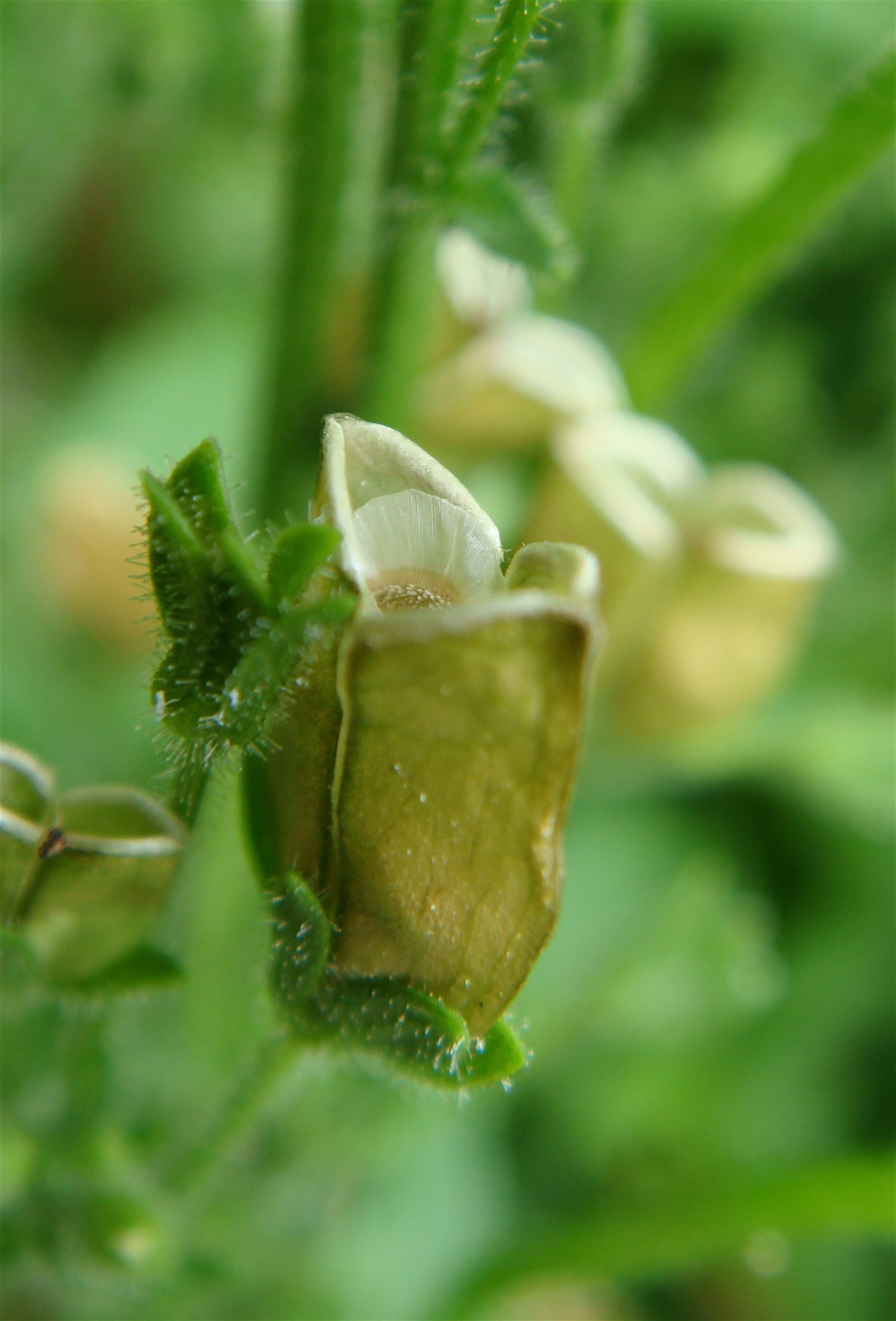 Staying on the subject of seeds for a moment, I love the way this unidentified plant holds it’s seeds in these tiny brown pouches, it is really quite effective.
Staying on the subject of seeds for a moment, I love the way this unidentified plant holds it’s seeds in these tiny brown pouches, it is really quite effective.
I will find out what this Tinkerbell plant is and include it in a future post.
(Simultaneous ooo’s and ahhh’s)
I emptied out one of these small green pouches just to see its contents…
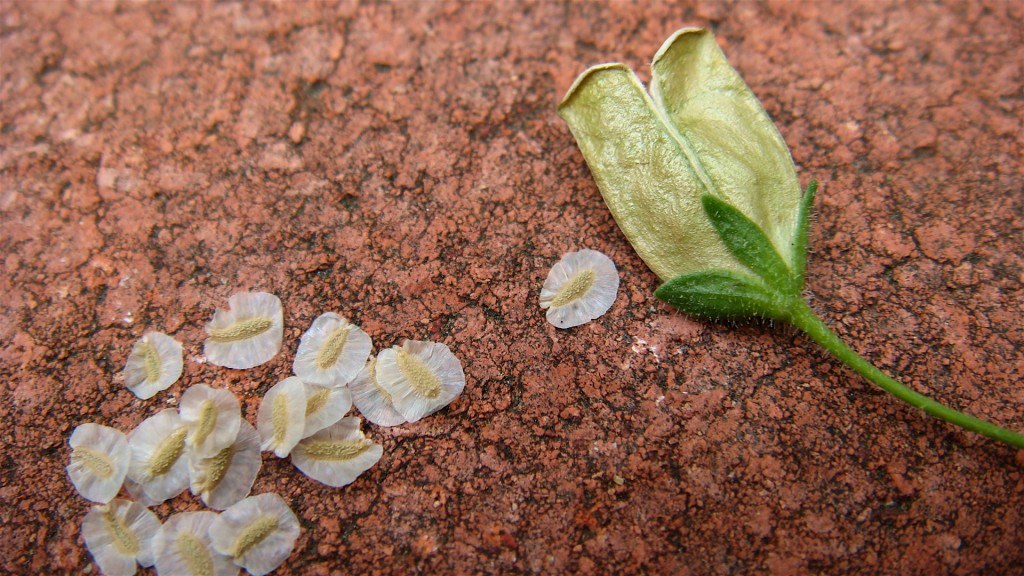
Amazing!
Now, time to gross you all out…yes it is that time folks, get your hurling buckets at the ready… this isn’t going to be pretty:
Are you ready?
Wait for it…
Wait for it…
This is insane, an emerging dragonfly…I think this is its back, the head sill being tucked up under the nymph head somewhere. This has to be one of the most amazing transformations in the insect realm. What makes it even more insane is that dragonflies spend most of their life in the water. A dragonfly has a life span of between one and six years (depending on size), but very little of that life is actually as an adult dragonfly. There are three stages of the dragonfly life cycle, the egg, the nymph, and the adult dragonfly. Flying adult dragonflies only live about two to four months.
Brrrr! You wouldn’t want to see this scene in the headlights, late at night on a country road.
 Another bizarre scene that I have never witnessed before, sadly resides on my mountain laurel:
Another bizarre scene that I have never witnessed before, sadly resides on my mountain laurel:
This is a new one for me, web-worms eating my mountain laurel seeds?
Well I hope you all get poisoned!
On a more colorful traffic–light-note…
The tomatoes are beginning to ripen in the Patch…
…and it looks like a bumper crop this year! I have planted a variety of tomatoes this year from plants obtained from the sunshine garden’s annual plant sale.
They are all doing pretty well.
As is my Buddah’s belly bamboo. This bright bamboo has rebounded faster then all my giant timber bamboos from our harsh winter. My giant timber bamboos have suffered.
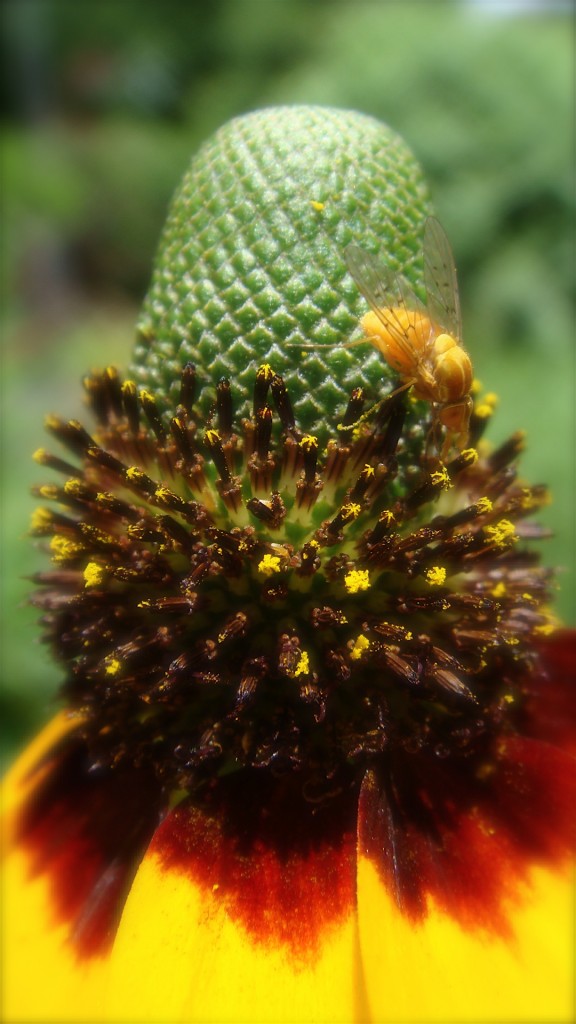 This is also a first in the Patch, a Lauxinid Fly
This is also a first in the Patch, a Lauxinid Fly
Neogriphoneura sordida
on my one and only Mexican hat, Ratibida columnifera.
Captains Log supplemental:
I have finally collected together my favorite photographs from the Patch and put them under one roof:
https://www.eastsidepatch.com/esphotography/
Inspirational image of the week, courtesy of my old friend and UK garden designer Paul Hensey at: http://paulhensey.blogspot.com/
Stay Tuned for:
“While the Neighbor’s Away…The Patch will Play”
All material © 2010 for eastsidepatch. Unauthorized
intergalactic reproduction strictly prohibited, and
punishable by late (and extremely unpleasant)
14th century planet Earth techniques.
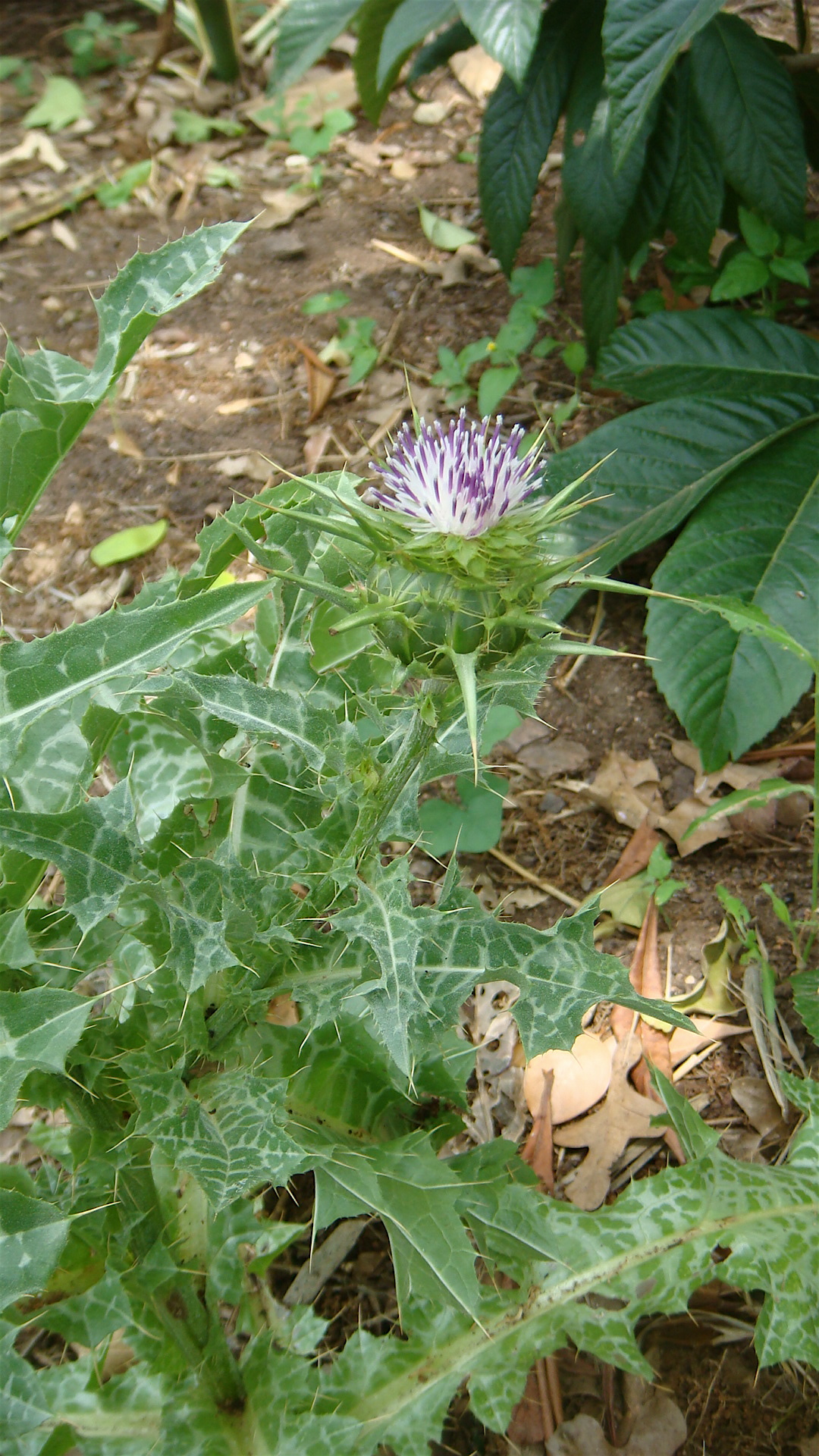
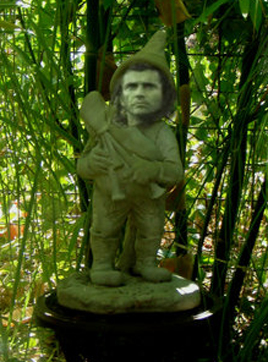
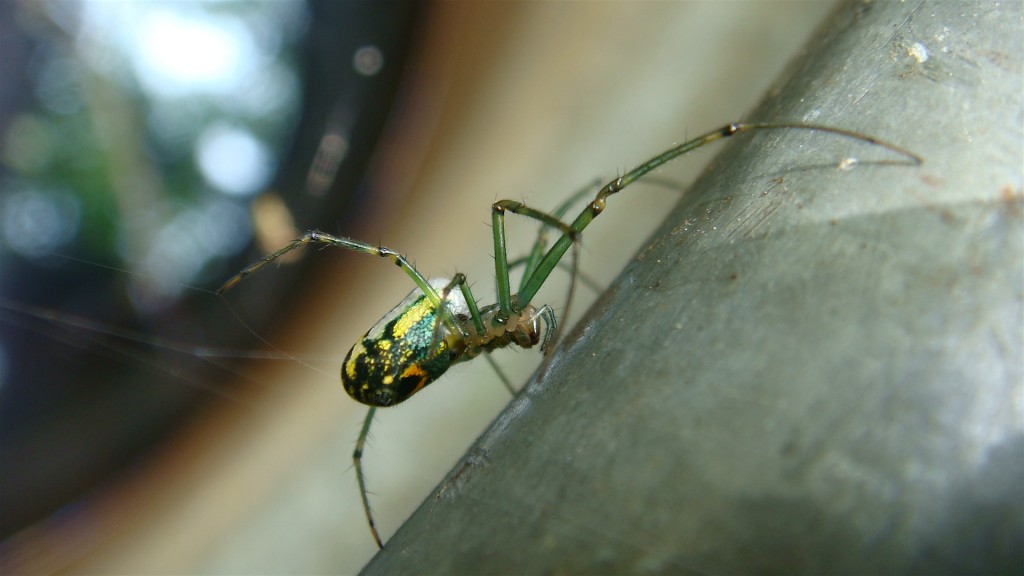
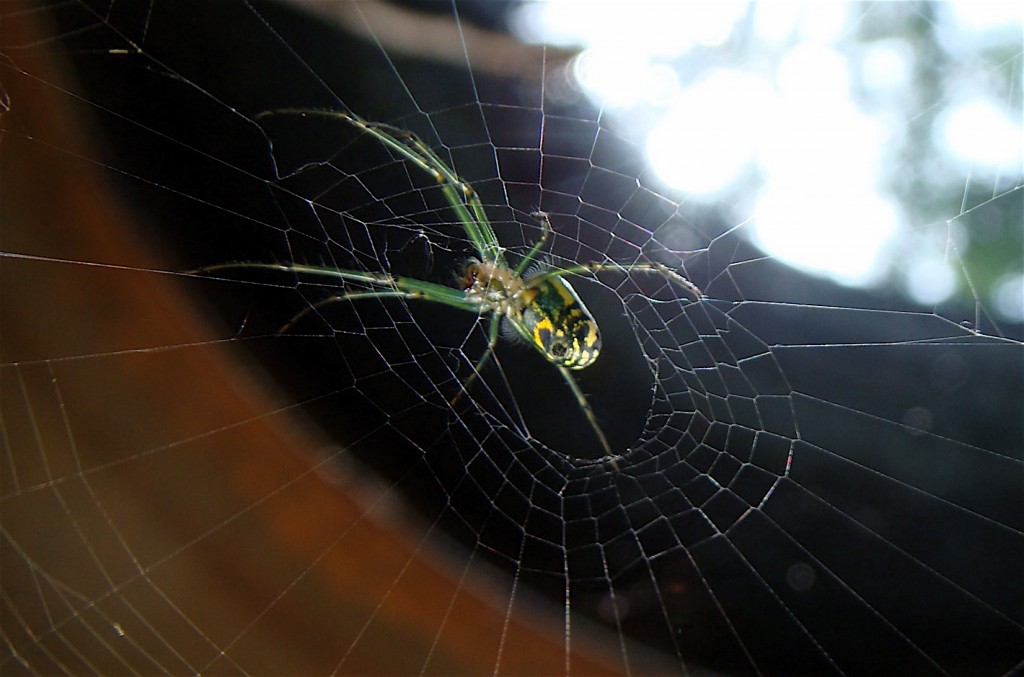
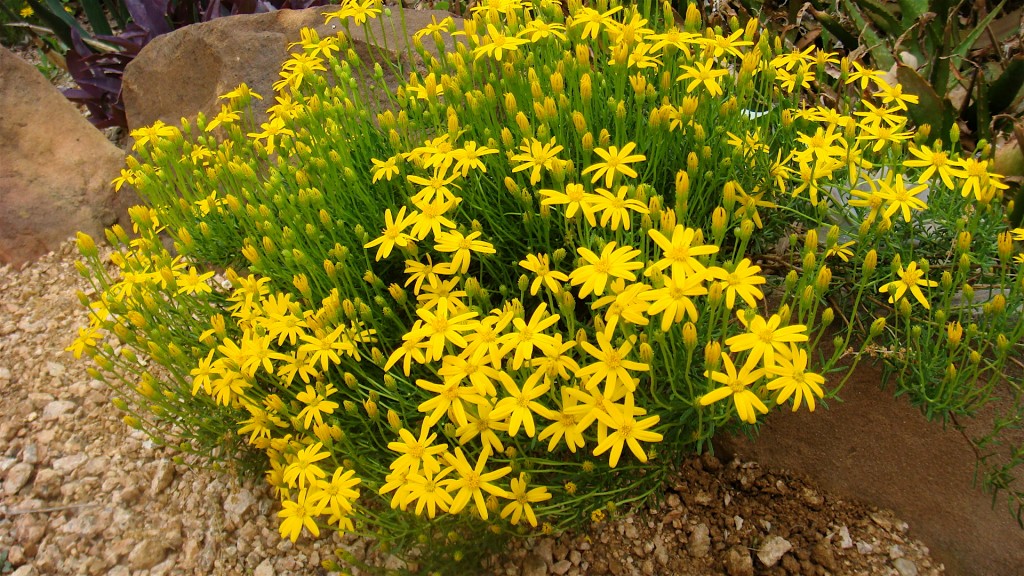
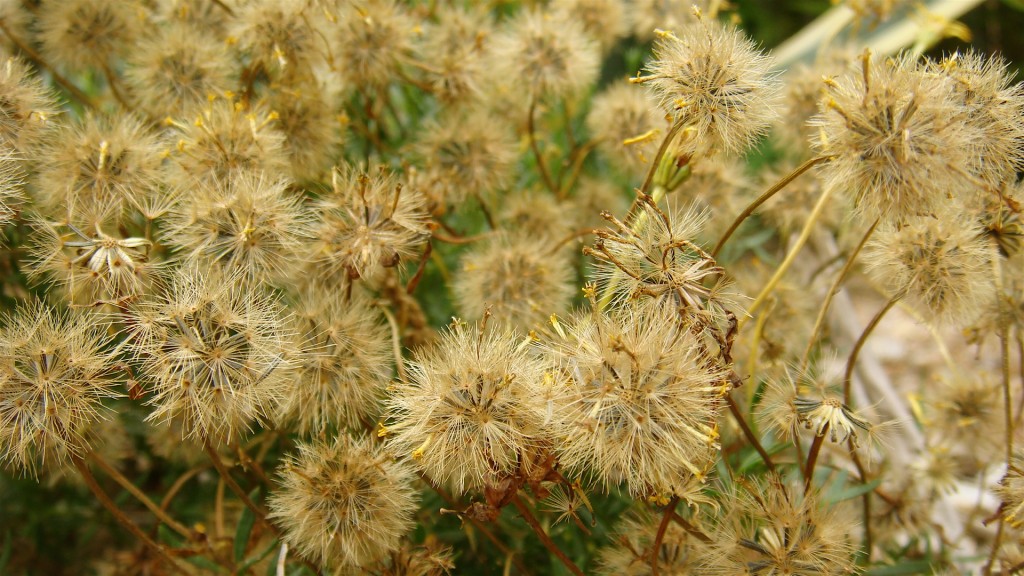
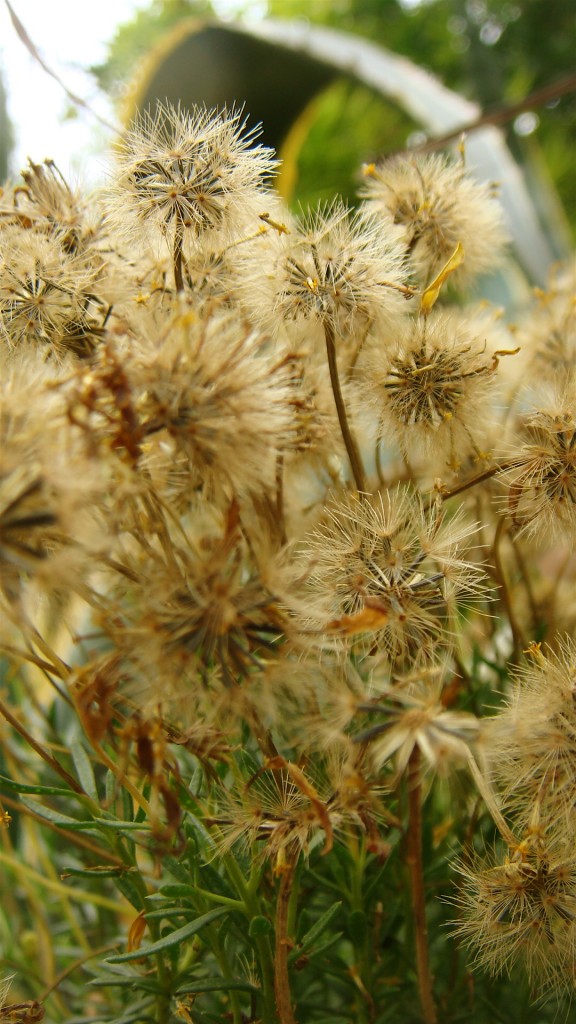


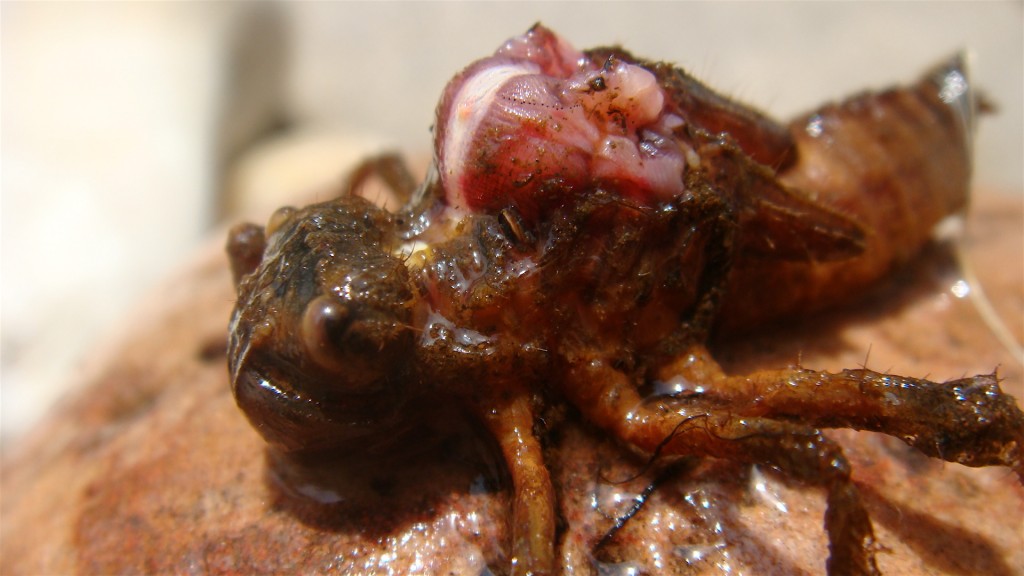
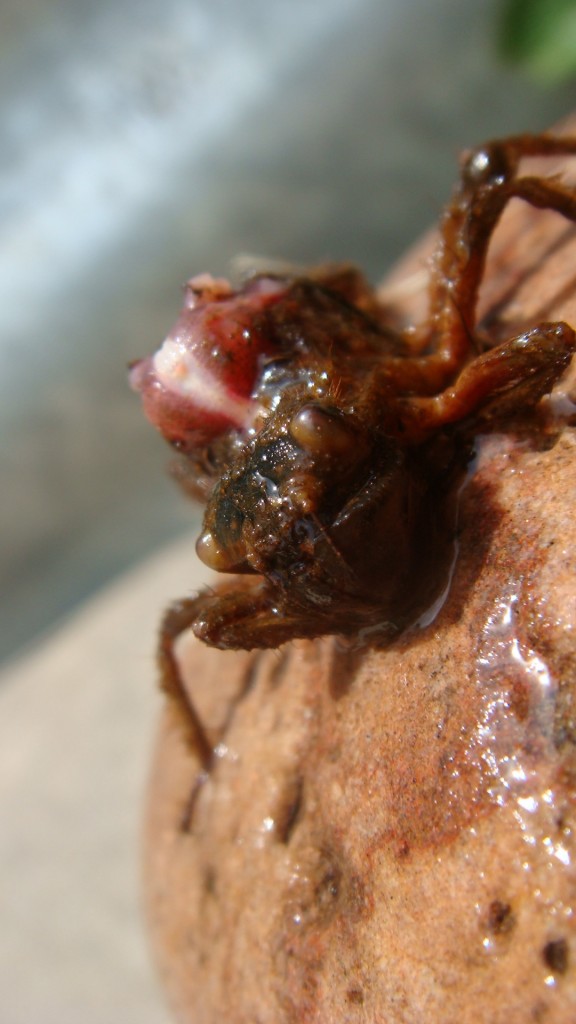
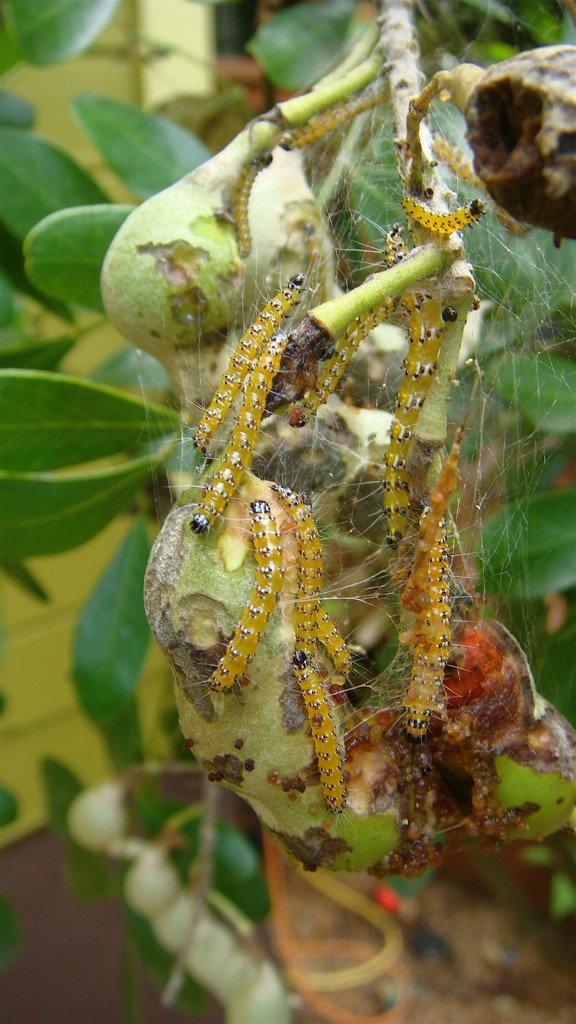
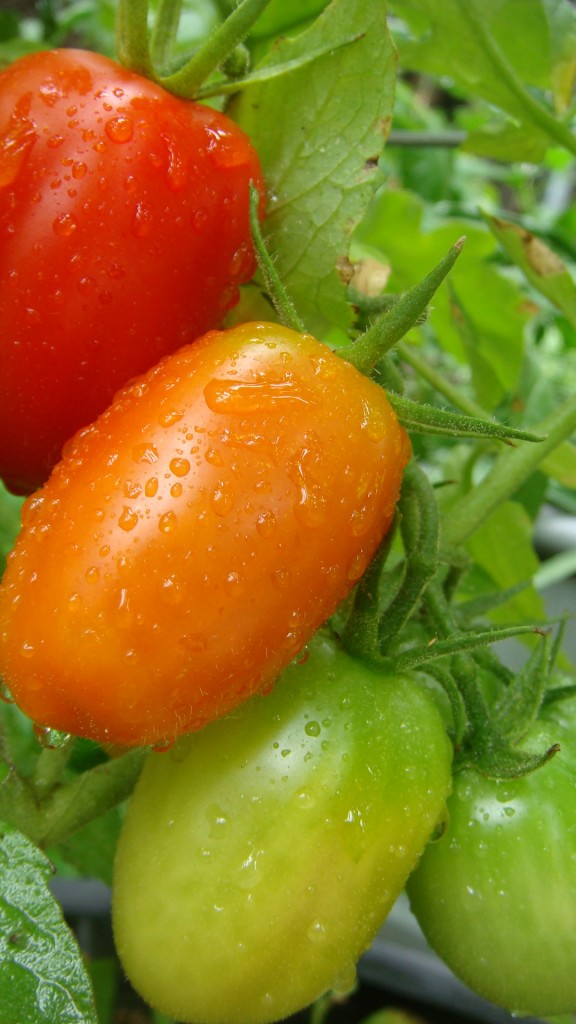
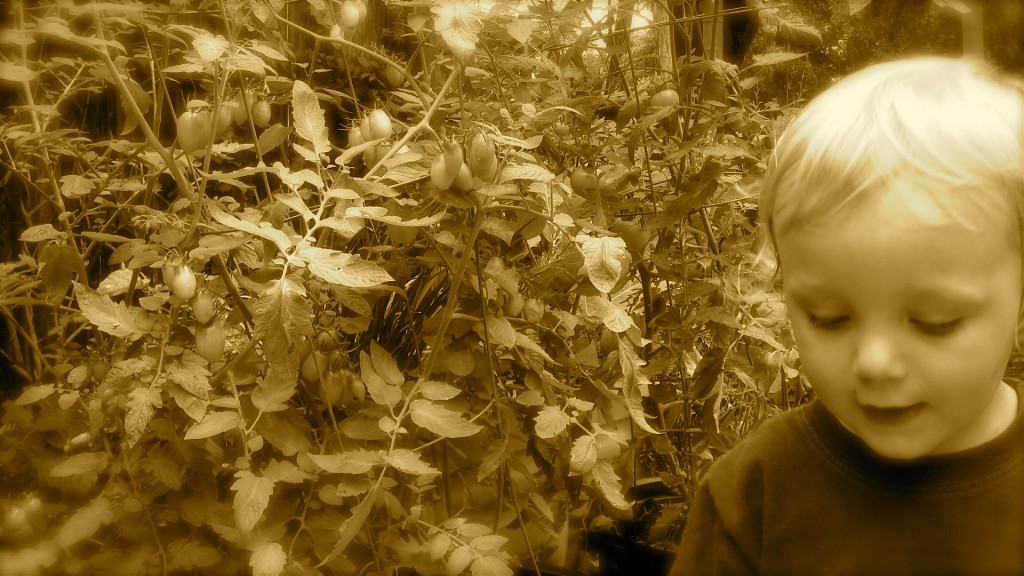
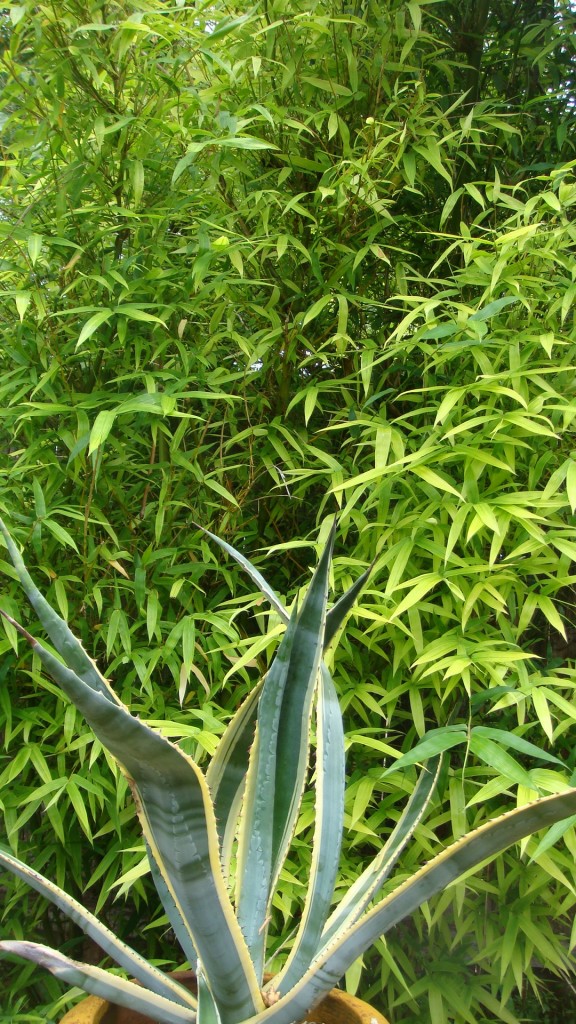
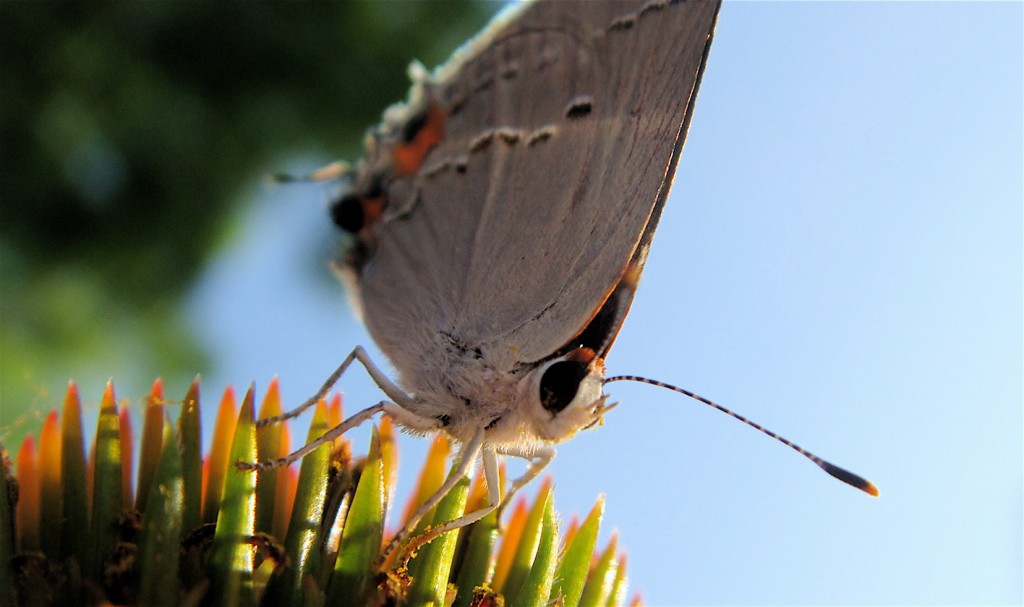


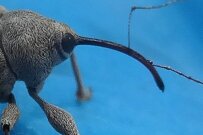




























































Comments on this entry are closed.
Awesome pics! The dragonfly is amazing.
Thanks YardFarm.
The dragonfly nymph is really quite disturbing, I have about five of these bobbing around in my feeder tank right now. They are even freakier when they swim down and disappear in the dark depths of the stock tank.
Amazing that you were able to discover & capture the adult dragonfly emergence. And the tomato traffic light made me chuckle.
Hi RBell.
I looked again today and could only find empty nymph shells. I had no idea that this nymph stage can take up to four years to complete!
Glad you liked the edible traffic light.
ESP.
I was going to say-please save me some seeds of the threadleaf ragwort , and puff they were all gone. It looks so much like damianita but a lot more compact and compact is what I am looking for. I am so glad that I always apologize when I tread on a plant but I am certainly taking plants out of the bedroom. Imagine all the gossip that goes on when we leave!
Hi Jenny…I have a couple more plants that did not receive the back of my hand…I will get you some for the GoGo!
What happens when a tomato is picked (screams,screams) and you eat it in front of the plant (shock, horror)! They must be terrified of us all! Just wait until they all rebel one day like on “The Happening”…tomato tendrils inching and creeping their way through open windows and letterboxes to silently strangle us in the night…! I am convinced my red passion vine tried this a couple of years back, sadly it never re-emerged this year.
I have a wrap round curtain for mine :-)
ESP.
Cool pictures, as usual and the plant nerd stuff is amazing. Why not? Why shouldn’t we all be connected! yeah team! I’m very envious of your tomato crop. Mine are just starting to bloom. Spring has been so cool and wet this year that I can’t believe its already latter May.
Thanks Cheryl, the clip is like a really bad episode of Star Trek! Too funny…very Avatar! My tomatoes are doing well, I stick to the cherry varieties as they ripen quicker and there is less chance of the birds getting them before I do (I do not net). Good luck with yours.
ESP.
We used to call those thistles, Tiger Thistles. They can get over your head high and have a deep tap root that makes them very hard to pull up, not that you would want to.
I harvested the seeds off my Feather grass to make them lighter, like you said to do. It worked good. I placed all the seeds around the gardens where I wanted more. By the millions. Probably a mistake but they are easy to pull if they grow in the wrong place. If iy gets to be a problem I will tell every one that Philip told me to. [chuckle, chuckle]
I do not think my Tiger Thistle is getting enough light under my Post Oak coming in at a staggering couple of feet!
Glad the seed hair pulling worked for you. I also considered keeping my seed bales, then I had a vision of them blowing all around my neighborhood and causing a plague of feather grasses of biblical proportions over the entire east-side. My grasses have developed more seeds since I pulled their ponytails, but no more matting, no more knotty dreads!
ESP.
I would have sworn that was damianita. And I must look more closely in my stock-tank pond to see if I ever get any dragonfly nymphs. I’ve never seen one before. They are pretty freaky.
I used to get caterpillars on my new-growth mountain laurel leaves, but I never saw them eat the seedpods. Interesting. You always have lots going on, and a good eye to capture it.
Hi Pam. I scoured a lot of pictures, (damianita and ragwort) and some posts back came to the conclusion that it was indeed ragwort, it is really hard to tell though from on-line images, and I may be wrong. It is a very low growing, compact plant, very cheery. I have some seeds for jenny, you should snag some off her (I know this may be difficult) :-) and plant some…see what you think.
I have had a bunch of nymphs recently… mmm, (perhaps I should rephrase that)…the warmer temperatures spurring on their emergence…and yes they don’t get much more bizarre then this! (slight facial flicker).
I have never seen web-worms on my laurels before (perhaps I should re-phrase this as well) and there were a lot of them (now in my trash can), I wonder if they survive eating these highly poisonous seeds?
Sorry to hear about your weeper…mine all came through winter okay, I wish I could say the same about my giant timbers (okay, enough is enough)…new growth, but a lot of dead mature culms from last years growth. Last years culms should be sprouting lateral growth by now, I have nothing. I cannot bring myself to fell these 40ft monsters just yet, ever the optimist. I will be building a Tiki-bar should I decide to cut them down!
ESP.
Oh, and my stricken Mexican weeping bamboo fully died. I’ve replaced it–one more chance on an expensive plant!
Our giant timber is also looking very dead with little sprouts around the bottom. Feel free to use our large old ones for your Tikki bar.
And the worms are chomping on our tiny little mountain laurel. I pulled them off and sent them to the garbage. Thought I should take a lighter to the webs but decided not to risk the possibility of the fire engines showing up.
Hi Gail.
I might just take you up on the Tikki Bar offer!
What is going on with the worms and the mountain laurel this year? Very odd!
The walls in our house are full of the Patch photography right now, you should pop over before we move the exhibition to the salon on Sunday. I would love your artistic feedback.
ESP.
Your photos and info about the dragonfly are amazing. I had no idea they had such a short life for us to see.
Your ESPhotography is stunning. You are so talented.
Hi Kathy.
Thanks on the dragonfly front, what amazing creatures and lives they live. It is incredible to me that they look like they do from emerging from these rather horrific looking nymphs. Thank you for dropping in to the ESPhotography page. I am about to display these images in public for the first time next week so I have been in a framing and matting frenzy for the last few days.
Glad you like them.
ESP.